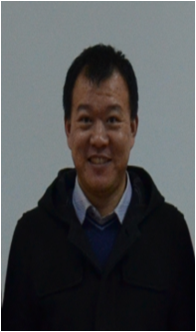Invited Speech Title: Random Radiation Metamaterial Aperture design for the Coincidence Imaging
 Speaker's Bio: Speaker's Bio:
Shitao Zhu is currently an associate researcher with the School of Electronic and Information Engineering, Xi’an Jiaotong University, Xi’an, China. He received the Ph.D. degree in electronic science and technology from Xi’an Jiaotong University, Xi’an, China in 2016. From 2008 to 2012, he was a systems engineer with the ZTE co., LTD, Xi’an, China. He has authored or co-authored more than30 SCI-indexed journal papers. He has also served as a reviewer for IEEE Transactions on Geoscience and Remote Sensing, IEEE Journal of Selected Topics in Signal Processing, IEEE Transactions on Aerospace and Electronic Systems, IEEE Antennas and Wireless Propagation Letters, IEEE Microwave and Wireless Component Letters, and Applied Optics, etc. His research interests are in the areas of metamaterial aperture antenna, loop delay estimation, digital predistortion, convex optimization and microwave coincidence imaging. Most of his work focuses on the random radiation aperture antenna based on the metamaterial and the algorithm of the coincidence imaging based on the independent random radiation array. Now his research is mainly concentrated in metamaterial aperture with bunching random beam and its application in the high precision remote detection.
Invited Speech Abstract:
With the development of the coincidence imaging and the metamaterial, the metamaterial aperture can provide large number of test modes in a single input single output, which extends the application scope of the coincidence imaging. The test modes (uncorrelated complex radiation petterns), which are generated by the metamaterial aperture, has been widely used in the coincidence imaging system. However,the design of the metamaterial aperture and the requirement of the coincidence imaging are still disconnected theoretically. In this paper, we attempt to present the problems in the connection of the metamaterial aperture design and the coincidence imaging requirement. Firstly, the property of the metamaterial cells depends on the structure, which is hard to be modeled in the aperture design. Then, the physical constraints, which should be considered in the requirement of the coincidence imaging, is hard to be given. Finally, the number of the test modes that contained in the aperture is hard to evaluate in theory. The related researches have been reviewed in the paper, including ourattempt in the design of the metamaterial antenna and the application in the coincidence imaging. We believe the presented problems can be solved in the next few years. |

